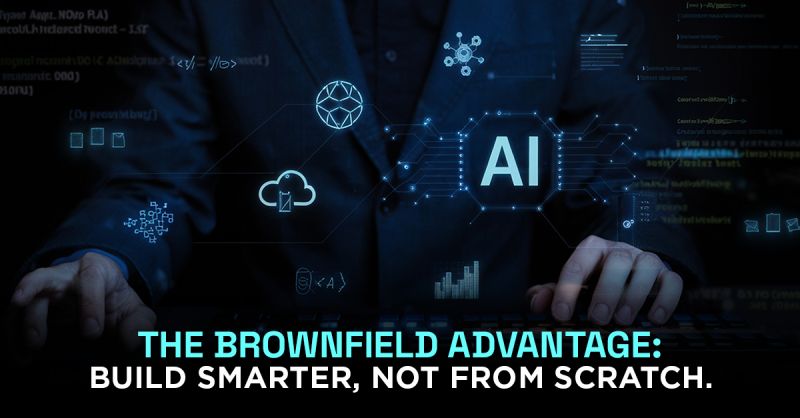
I was standing at a crowded airport watching planes land one after another.
The runway was busy, the schedule was tight, and flights kept coming.
In a setup like that, you don’t shut the airport to pour a new runway.
You add an express lane, fix the signals, and improve coordination so things move faster without stopping what already works.
That’s the idea behind the brownfield advantage:
You don’t replace your old systems. You add AI around them to make them faster and smarter, without big rewrites.
What “brownfield” means:
– You keep your current software running.
– You add small components next to it that bring AI into the flow.
– You improve speed and decisions step by step, not all at once.
How it looks in practice:
→ Add a connector that listens to key events (e.g., order placed, ticket created) without changing your existing system.
→ Create a shared data store that all AI features read from (customer history, product info, status).
→ Show AI suggestions on the same screen your team already uses (e.g., next best action, priority, draft reply).
→ Roll out safely: First test privately in the background, then try with 10% of users, and move to 100% only when results are stable.
If your tech is the plane that already flies, AI shouldn’t demand a new airport.
Add the express lane. Fix the signals. Equip the crew.
That’s the brownfield advantage: AI that fits what you have and makes it better this quarter.


